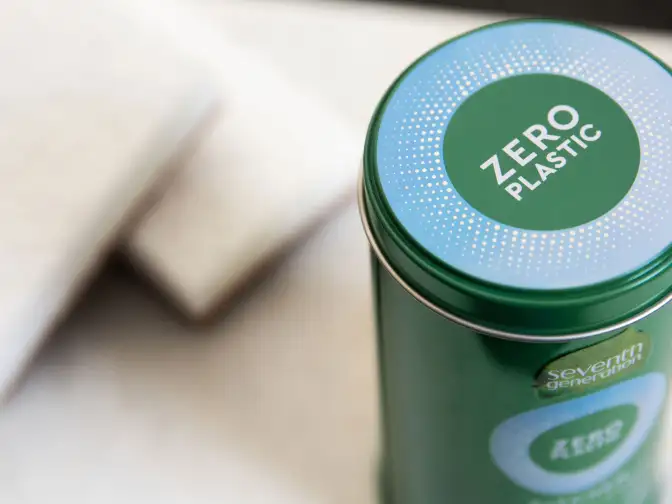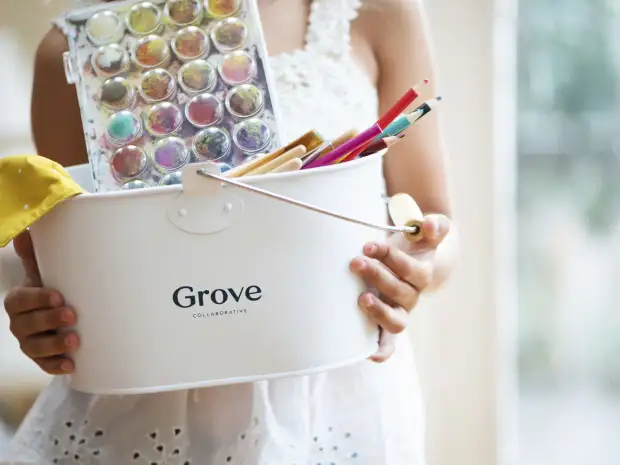
Step 1: Mind the heat
When machine drying white clothes, it's important to use low-heat and delicate settings. High heat can cause stains and dirt to discolor even more. Excessive heat can even scorch your whites.


Last Updated: April 6, 2021
A crisp white jacket or dress shirt is a showstopper. That is, if it's actually white. Easier said than done, right? With our step-by-step guide, your white clothes will be bright and clean once again.
There are plenty of reasons why white clothes are so striking. Beyond the fashion and color coordination, sporting a clean, white garment impresses simply because it’s white. White clothes are hard to keep white though. Too often, we reach for that white shirt only to find stains, yellowing, and other disappointing discolorations.
If your white clothes have slowly moved further and further into the back of your wardrobe, fear not. We’re here to help brighten up your whites, and make them worth showcasing once again.
It depends! For washing heavy white fabrics like sheets, towels, and thick socks, a hot water wash is your friend. For everything else, you’re going to want to keep it dialed to warm or cool, depending on how delicate the fabric is. Check your fabric’s care tag for best washing practices.
Should you wash all of your clothes in cold water? We asked Clement Choy, Ph.D., Grove Collaborative fellow and senior director of science and formulation if cold water laundry actually works.
No! In fact, most experts recommend avoiding old-fashioned bleach on your white laundry. Chlorine bleach strips away valuable dyes, reacts poorly with detergent, and may lead to yellowing instead of whitening.
There are plenty of safe bleach alternatives we do recommend though, including chlorine-free bleach, stain-releasing detergent, stain-removers, and laundry boosters.
What's bleach alternative, you ask? Grove experts explain why non-chlorine bleach is safer and how it works (even on color clothes).
Thankfully, there are plenty of ways to get your white clothes bright again. These range from spot treatments to deep-cleaning power washes. Here are some techniques for bringing out — and keeping — the white in your clothes.
It’s always best to treat stains as soon as they happen. Apply a stain remover and water to a new stain, and rub the mixture in with your fingers. This will clear the stain before it sets, but you should still wash your garment fully when you get a chance.
For old, set-in stains, pre-treating with a stain remover, chlorine-free bleach, baking soda, or hydrogen peroxide will prep a stain for removal in the wash. Apply one of these formulas to old stains and discoloration alike.
If your regular laundry detergent doesn’t seem to be cleaning your whites to your satisfaction, try adding a laundry booster to your load. Laundry boosters are safe cleaning agents that can help disperse tough stains and discoloration. Common laundry boosters include baking soda, borax, distilled white vinegar, and hydrogen peroxide.
Depending on your climate and water system, you may be washing with “hard” or “soft” water. Both can hamper the cleaning process of white clothes. Some boosters, such as borax, can help balance your water, leading to a more effective clean all around.

At Grove, we want to be part of the solution, not the problem. We believe using plastic isn’t sustainable — period. Now it's time for you to take action too.
Over the next five years, we're removing plastic from every product we make and sell, like Seventh Generation natural household products. We’re committed to rethinking our products, transitioning our packaging, and leading our industry with full transparency.
With all the pre-reading and pre-treating finished, we can get down to proper washing.
When we say “regular” whites, we’re talking about shirts, pants, jackets, sweaters, and any other day-to-day clothes. (We’ll get to towels, sheets, socks, and delicates later.)
Here are some basic steps to washing white clothes:
Towels, sheets, and socks can generally handle higher heat than most regular clothes. You’ll still want to check their care tags to be safe. Otherwise, wash these items as you would your regular white clothes. A hot-water wash is ideal for these items, since it’ll kill bacteria and odors.
Delicate whites require a bit more TLC than the rest of the bunch. For one, check your care tag to see if your delicates must be hand washed. If you can machine wash them, you should stick to a cool- or cold-water gentle cycle. If your delicates have buttons, hooks, or straps, use a mesh laundry bag to protect them from snags and other damage.
Drying white clothes is an often-overlooked, but crucial, part of ensuring a bright final product. Over-drying can actually cause stubborn stains and yellowing, and that’s the last thing you want after all that hard work washing them.
The best way to dry your white clothes is to hang them in the sun. The sun’s ultraviolet light will help brighten and whiten your white garments. If that’s a no-go for you, machine drying is a reliable backup. Here are some easy steps for machine drying white clothes to get the most out of your dryer.

When machine drying white clothes, it's important to use low-heat and delicate settings. High heat can cause stains and dirt to discolor even more. Excessive heat can even scorch your whites.

Set your dry cycle for a lower amount of time than usual. Remove your whites before they are completely dry. Removing them while they’re still slightly damp helps to prevent excessive over-drying and the resulting stubborn stains and discoloration.

To finish the drying process, hang-, air-, or flat-dry your white clothes. This gentle finish helps prevent any final discoloration, and it saves some energy too.

Stop the bleeding, slow the fading, and keep your colors bright — here’s how to wash colored clothes the right way.

Are wool dryer balls better than dryer sheets? Learn the basics of this sustainable swap, including how to use them.

A deodorant stain doesn’t have to determine the shelf life of your shirt. Discover how to get them out with these tips.

We’re sharing the best cleaning tips on how to get ink stains and pen marks out of clothes, with step by step instructions.